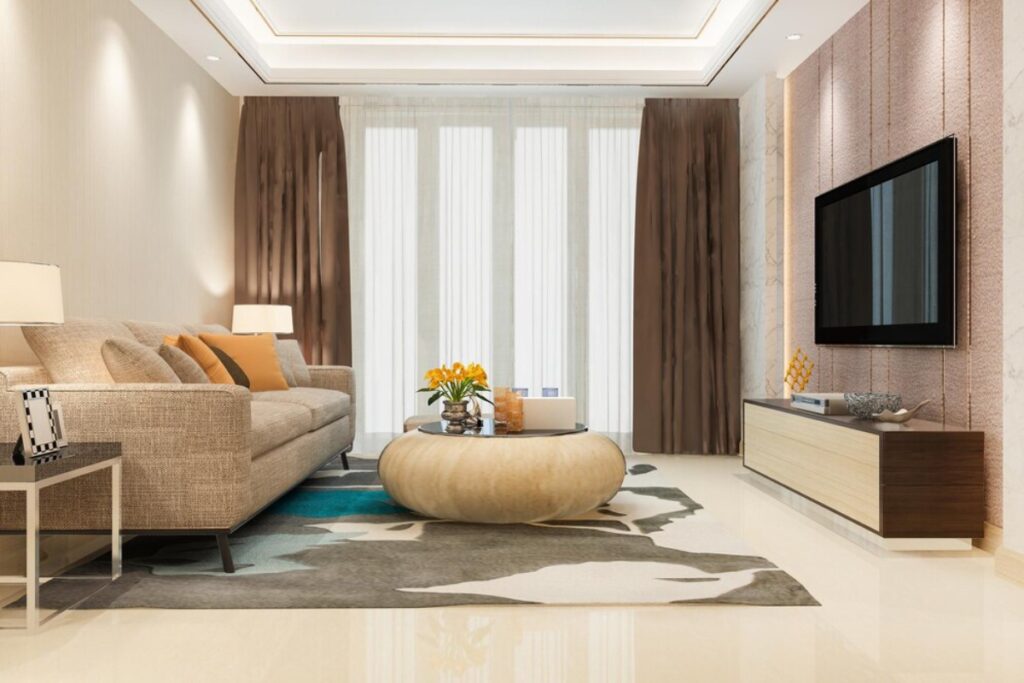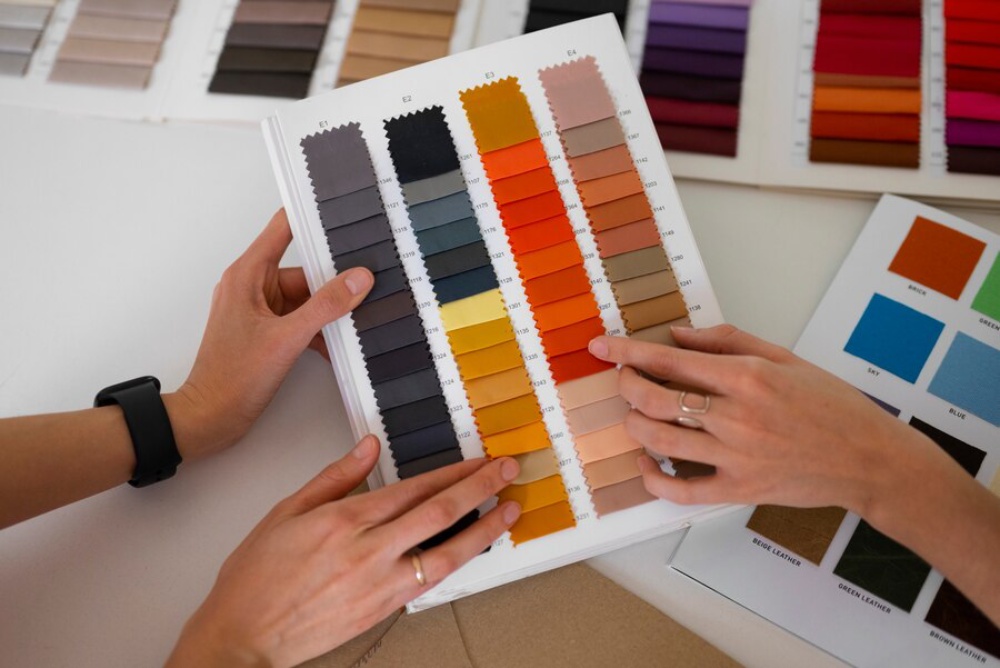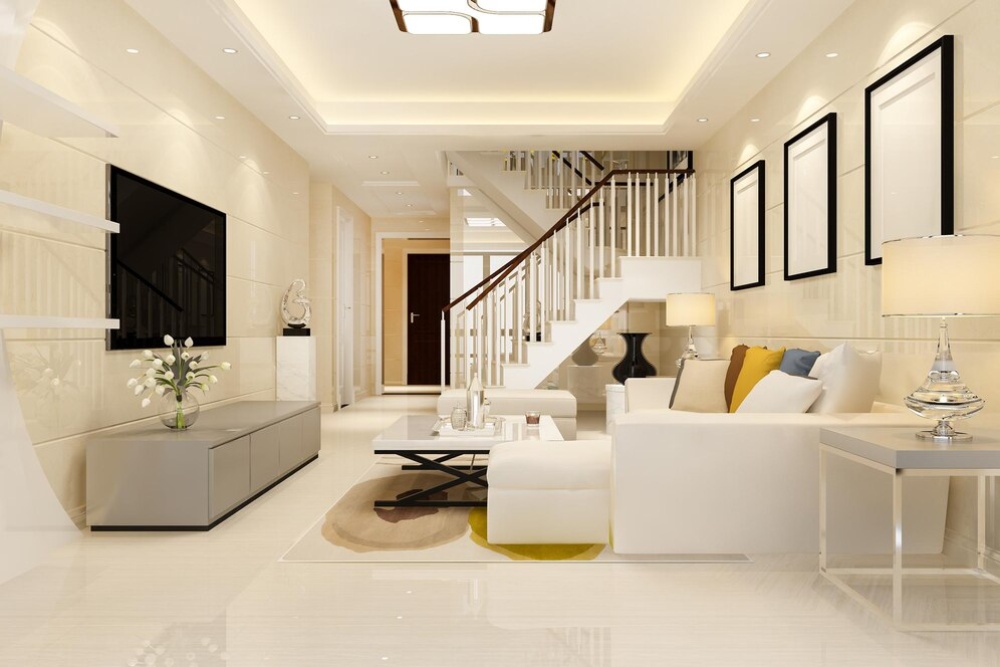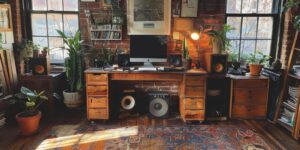The Interior Design Blog

How to Create a Mood Board for Your Home Design Projects
The mood board is central to home design. It is a visual representation of your design ideas and inspirations. A mood board can be like a compass for your project. If you’re working on a small room or a significant home renovation, it helps focus your selections. This is a tool that maintains your writing style.
Today, in November 2023, mood boards are on fire. Both professional designers and DIYers use them. They translate vague ideas into concrete plans. In this guide, we’ll show you how to make a great mood board and give you expert tips to help turn your home design ideas into reality.
Understanding the Core
What Is a Mood Board?
A mood board is a curated collection of images, materials, text, and other design elements that capture the essence and aesthetic of a design concept. It visually communicates your vision and helps align design decisions across your project.
Pro Tip: Stay True to Your Vision: Trends come and go; your style is timeless.
Why Mood Boards Matter in Home Design
Mood boards are more than just pretty collages. Here’s why they matter:
- Visual Clarity: Communicate your vision to architects, contractors, or family members.
- Design Cohesion: Helps maintain a consistent look and feel across rooms and elements.
- Efficient Decision-Making: Allows you to test combinations before committing.
- Inspiration and Focus: Keeps you grounded in your initial goals amid shifting trends.
Important tip: Be Selective: A cluttered board can blur your focus—quality over quantity wins.
Reference Checklist
Before diving into the detailed steps, keep this handy checklist in mind:
- Define Your Design Goals
- Gather Inspiration
- Select a Format (Physical or Digital)
- Organise Your Elements
- Review and Refine
Quick Guide: How to Create a Mood Board
Define Your Design Goals
Start with clarity.
Ask yourself:
- What is the purpose of this design project?
- What mood or feeling do I want the space to evoke?
- Am I working within a specific style (e.g., Scandinavian, industrial, boho)?
These answers will form the foundation of your mood board.
Gather Inspiration

Collect visuals and materials that reflect your design goals. Try these sources:
- Magazines & Books: Great for timeless interior photography.
- Online Platforms: Pinterest, Instagram, Houzz.
- Nature & Travel: Colour palettes and textures from the outdoors or different cultures.
- Personal Items: Heirlooms, keepsakes, or objects you love can help shape your board.
Select a Format
Decide between:
- Physical Mood Board: Cut-outs, fabric swatches, paint samples arranged on foam board or pinboard. Great for tactile learners.
- Digital Mood Board: Tools like Canva, Adobe Express, or Milanote offer drag-and-drop interfaces, making them easy to revise and share.
Organise Your Elements
Now that you’ve gathered your visuals, it’s time to compose your board.
Here are some tips:
- Create a Focal Point: Choose one central image or element to anchor the board.
- Maintain Balance: Distribute colours, textures, and themes evenly.
- Experiment with Layering: Overlapping images or materials can add visual interest.
Review and Refine
Step back and assess:
- Does this board truly reflect your intended atmosphere?
- Are there any elements that feel out of place?
- Would someone else immediately grasp your vision by looking at it?
Ask for feedback if needed, and tweak as necessary.
Common Pitfalls to Avoid
- Inconsistency: Avoid mixing unrelated styles or clashing palettes.
- Overcomplication: Keep it simple. Your board should inspire, not overwhelm.
Best Practices & Additional Insights
Enhancing Your Mood Board

- Add Texture: Use fabric swatches, wood veneers, or wallpaper samples.
- Include Colour Swatches: Consistent hues across elements help ensure visual harmony.
Industry Insights
- Trends vs. Timelessness: Mix current styles with classic pieces for longevity.
- Eco-Conscious Design: Try to include sustainable materials or vintage finds.
Frequently Asked Questions
1. What software can I use to create a digital mood board?
Popular options include Canva, Adobe Express (formerly Spark) and Milanote. These tools are beginner-friendly and offer customisable templates.
2. How detailed should my mood board be?
That depends on the size of your project. Aminorl room refresh may need just simple visuals. In contrast, a home renovation often requires detailed swatches, colour codes, and finishes.
3. Can I update my mood board later?
Absolutely. A mood board is a living document—it should evolve as your ideas and inspirations do.
Your Next Step in the Design Journey

One of the most powerful — and fun! — tools in your home design arsenal for building a mood board. It helps bring clarity, inspires creativity, and establishes consistency for your project.
So, why wait? So gather your inspiration, select your format, and start constructing your board today. Remember to share your finished board with friends or collaborators for feedback. With your mood board set, you are halfway to creating a space that feels true to you.









